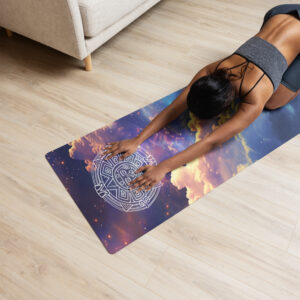Primal Primer 20 (Fitness)
Exposure to hot environments was a reality in Africa for signifiant spans of human incubation. In arid and cyclically hot environments, humans evolved physically and culturally to endure and thrive in adverse conditions.
Bipedalism & Thermoregulation – Walking on two legs reduces heat exposure, while increasing cooling through sweat evaporation. Bipedalism also creates more efficient movement; generating less heat and calorie expenditure.
Skin Pigmentation – Evolving in hot African savannas led to selection pressures for darker skin and sun radiation protection. Pigment’s natural sunscreen reduced cancer risk while preventing folate breakdown (folate being an important B vitamin sensitive to U.V. radiation). Melanin (responsible for skin coloration) additionally balances our ability to synthesize vitamin D for bone and immune health.
Behavioral & Cultural – Evolution in hot environments created cultural practices celebrating and engineering regular heat exposure conditions through sauna, steam baths, or hot springs; augmenting hygiene while stimulating heat shock protein production.
Heat Shock Protein Production
In response to stressful environments (particularly hot ones), cells produce heat shock proteins to protect and repair proteins damaged by heat.
Protein Folding & Stability – Heat shock proteins are cellular chaperones aiding in folding and stability of proteins made in the body. By stabilizing proteins and preventing damage, processes of cell death are arrested, ensuring cells recover and continue functioning after heat stress.
Resilience & Immunity – Heat actuated stress response systems provide protection from oxidative stress, infections, toxins, and excessive activity. Heat shock proteins function to present damaged and infected cells to the immune system for elimination and recycling.
Increased Heat Tolerance – Regular exposure to hot environments increases heat shock protein production; acclimatizing the body and enabling robust tolerances to adverse conditions through efficiencies of repair and protection.
Endurance & Exercise Benefits – Heat shock proteins are not only activated from environmental heat, but also by internal heat generated from physical activity. During endurance activities, these proteins mitigate excessive muscle damage caused by strain, while promoting faster recovery and repair.
Increased Longevity & Stress Adaptation – Exposure to heat stressors induce hormesis; where low chronic levels of stress improve the organism’s overall resistance to higher stress; resulting in increased longevity and function over time.
Sapiens Are Made Of The Elements & Should Be Exposed To Them
We live in a climate controlled crisis. Modern sapiens habitat between cushioned temperatures of 70-75 degrees independent of season. Our circulatory system no longer has the cyclic stimuli of adjusting to the high lows of night / day and winter / summer. Re-engaging the body’s amazing ability to adapt to stress through exposure of high internal and external temperatures attenuates the vascular system’s ability to dilate and constrict; increasing blood flow, reducing body heat, and waste motility. Modalities of heat such as sauna, sun exposure, or layering clothing during arduous activity increases production of heat shock proteins and their resulting cascade of health and performance benefits.
~Cave Implementation~
Expose yourself to the discomfort of heat everyday. Leveraging sauna, or artificIal sauna (exercising with layers, heaters, or outside with maximum UV exposure) activates a myriad of adaptive pathways. Timing varies and scales according to your mode of misery. Seek uncomfortable conditions and thrive from inviting resilience.
Seek Uncomfortable Conditions & Thrive From Inviting Resilience.














